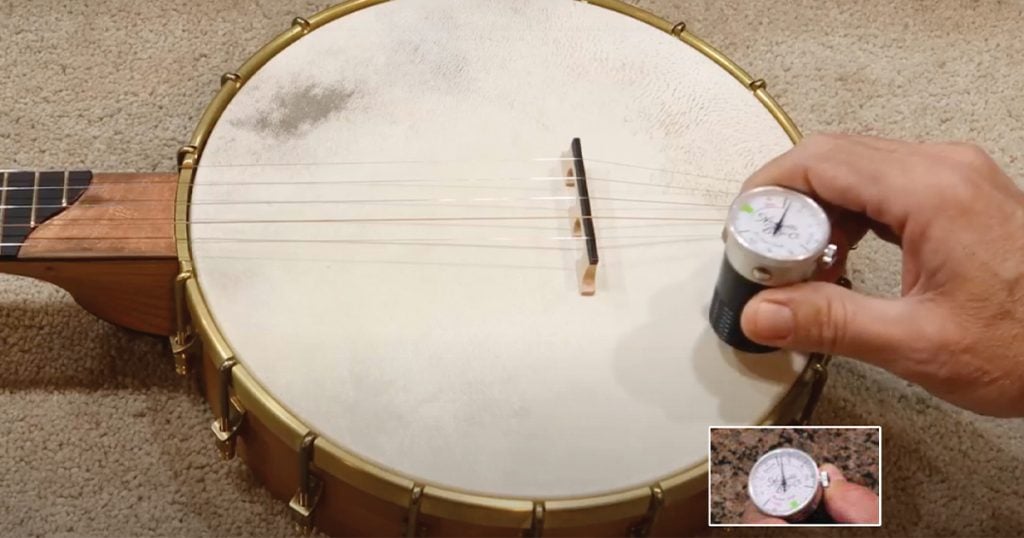The Nashville Banjo Company’s Pocket-Dial—Banjo Head Tension Measuring Device
Obtaining your optimum tone preference from your banjo is something that can be influenced by number of variables. One of those variables is banjo head tension. If your banjo head is too loose, the tone can be too tubby. If the head is too tight, the tone can be too bright. Some players will “tap tune” their head. Others will pressure test by pressing down with their thumb. Some may also use the “ruler method” to measure head deflection. However, each of these methods can be inconsistent and/or less than accurate. And, how can you be sure that tension is even across the head? With so many nuts to tighten it isn’t easy to ensure that each area of the head holds the preferred tension.
If you have been struggling with obtaining and maintaining proper head tension on your banjo, Dave Dillard of The Nashville Banjo Company is here to help with his easy-to-use and highly accurate Pocket-Dial. The Pocket-Dial is a precision dial indicator that is used to measure head deflection under a fixed singular point load. Small adjustments to the head tension, based on the dial’s readings, can produce a warmer or a brighter tone, as preferred.
The Pocket-Dial works through the use of a precision-loaded spring which gently pushes a small probe tip on to the banjo head. The head deflection is measured in the area immediately under the probe. This is similar to the thumb pressing down on the head method, but highly accurate.
The Pocket-Dial comes with detailed instructions regarding its calibration and use. There are three scales to choose from (Simple, Standard, and Skin Scales) which are explained in detail in the instructions that accompany the devise. To use the Pocket-Dial you follow four simple steps: One—Select the scale and scale setting you desire, Two—Calibrate the Pocket-Dial, Three—Measure the tension, Four—adjust the tension. By repeating steps three and four at various evenly spaced locations around the circumference of the banjo head you can create the desired, and even, banjo head tension in a matter of minutes.
The Pocket-Dial comes in a nice neoprene case that easily fits in the storage compartment of your banjo case. I found the Pocket-Dial to be the easiest, fastest, and most convenient way to accurately obtain and maintain the desired tension on my banjo head. Highly Recommended!

